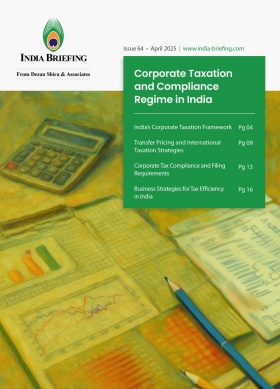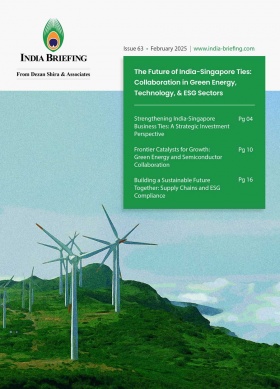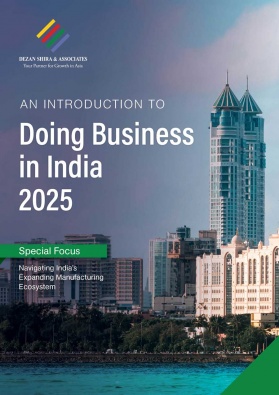India-UK Vision 2035 Explained: US$100 Billion Trade Goals and Opportunities
On July 24, 2025, Prime Ministers Narendra Modi and Keir Starmer launched the India–UK Vision 2035 in London—a 10-year roadmap to strengthen ties across trade, technology, defense, education, and climate.
Building on the newly signed India-UK FTA, the framework sets comprehensive goals to drive innovation, economic growth, and strategic cooperation.
During their meeting in London on 24 July 2025, the Prime Ministers of India and the United Kingdom jointly endorsed the India-UK Vision 2035. Shortly after signing the India-UK Free Trade Agreement (FTA), the two leaders reaffirmed their aim to deepen bilateral cooperation across a broad spectrum of domains. The framework outlines a shared ambition to advance mutual growth while addressing pressing global challenges—spanning trade, technology, defense, climate action, and education.
The Vision 2035 dossier lays out a time-bound and structured pathway for the evolution of bilateral ties over the next decade.
India and the UK formally signed a landmark FTA on July 24, 2025, after over three years of negotiations. Officially titled the Comprehensive Economic and Trade Agreement (CETA), the deal is designed to substantially enhance bilateral trade and investment, with a shared goal of increasing trade volume from US$56 billion to over US$100 billion by 2030.
CLICK HERE: India Signs Historic Trade Deal with UK: What It Means for the Two Economies
Reinvigorating bilateral engagement under Vision 2035
India–UK Vision 2035 sets clear strategic goals and timelines to guide bilateral ties over the next decade. The implementation of this vision will focus on sustained high-level political dialogue, with annual reviews conducted by India’s External Affairs Minister and the UK’s Foreign Secretary. Dedicated ministerial mechanisms will monitor progress across sectors, including trade, investment, technology, and finance, ensuring that the partnership remains responsive to evolving priorities.
Promoting economic growth via trade and investment
Under Vision 2035, India and the UK commit to deepening cooperation in key growth sectors including renewable energy, health and life sciences, financial and professional services, creative industries, and defence manufacturing. Both governments will establish collaborative platforms to strengthen dialogue among business leaders, foster innovation, and enhance capital market connectivity. Initiatives like the UK–India Financial Partnership and the India–UK Infrastructure Financing Bridge will actively drive green finance, technological investment, and long-term infrastructure development.
The India–UK FTA has laid the foundation for an expanded trade relationship. The agreement is expected to stimulate economic growth in both countries by unlocking market opportunities, improving regulatory alignment, and supporting job creation. Discussions are also underway to conclude a Bilateral Investment Treaty (BIT), further strengthening the investment framework.
Furthermore, India and the UK also aim to improve connectivity through expanded air travel routes and a renewed Air Services Agreement. At the multilateral level, India and the UK reaffirm their shared commitment to strengthening a fair and inclusive global trading system, including through reforms at the World Trade Organization (WTO) and cooperation on international tax transparency.
Driving innovation and technological advancement
The Vision 2035 states that both countries intend to accelerate innovation-led growth and jointly shape emerging technologies for global benefit. Through the UK–India Technology Security Initiative and the Science and Innovation Council, the two sides will expand cooperation in artificial intelligence (AI), cybersecurity, semiconductors, quantum computing, and biotechnology.
A joint UK–India AI Centre will be established to support the development and deployment of AI solutions. Additionally, collaboration on next-generation telecommunications will include a new Connectivity Innovation Centre to advance cyber resilience and digital inclusion. The partnership also envisions joint action to secure critical mineral supply chains and promote the circular economy. Enhanced cooperation in biomanufacturing and space research, along with continued focus on global health security, will further elevate the technological partnership.
Both countries will host regular Strategic Export and Technology Cooperation Dialogues to facilitate licensing, address regulatory issues, and enable high-value trade in critical technologies, particularly in the defense and aerospace sectors.
Advancing climate action and clean energy
The UK and India intend to collaborate on mobilizing affordable climate finance and reforming multilateral development banks to support developing countries. The partnership will focus on energy storage, grid transformation, and offshore wind energy, while also expanding nuclear cooperation to include next-generation technologies such as small modular reactors.
In clean technology, India and the UK will jointly pursue innovation in renewables, hydrogen, carbon capture, and battery development. The flagship Net Zero Innovation Partnership will support entrepreneurs developing deep-tech climate solutions. Scientific collaboration will also be enhanced in areas like marine ecosystems, disaster preparedness, and biodiversity conservation.
India-UK trade pact excludes carbon tax exemption
While the two countries have announced a roadmap on climate action and clean energy, it must be noted that under the FTA, India has not obtained an exemption from the UK’s upcoming carbon border tax. The think tank agency, Global Trade Research Initiative (GTRI), highlights that the implementation of a carbon tax could adversely affect carbon-intensive Indian exports to the UK.
In December 2023, the UK government announced that it would implement its Carbon Border Adjustment Mechanism (CBAM) starting January 2027. This policy will tax imported goods based on their carbon emissions, aligning with the UK’s broader climate objectives. Initially, the CBAM will target sectors such as iron and steel, aluminum, fertilizers, cement, ceramics, glass, and hydrogen—areas where India holds significant export stakes.
GTRI founder Ajay Srivastava criticized India for failing to secure an exemption or safeguard clause in the agreement, calling it a missed strategic opportunity. He also cautioned that India may encounter similar hurdles in its ongoing trade talks with the European Union, which is introducing a comparable carbon tax regime.
In an earlier assessment, GTRI projected that Indian exports worth around US$775 million could be at risk once the UK enforces CBAM. Sectors with high carbon intensity are likely to suffer the most, particularly in the absence of a compensatory mechanism within the FTA.
Key takeaway
The India–UK Vision 2035 represents a strategic blueprint for an ambitious, modern, and multidimensional partnership. It sets the stage for a BRISK alliance—anchored in Business, Research, Innovation, Science and technology, and Knowledge—designed to deliver lasting benefits for both nations. Through sustained collaboration and time-bound implementation, India and the United Kingdom aim to shape a more secure, prosperous, and sustainable global future.
About Us
India Briefing is one of five regional publications under the Asia Briefing brand. It is supported by Dezan Shira & Associates, a pan-Asia, multi-disciplinary professional services firm that assists foreign investors throughout Asia, including through offices in Delhi, Mumbai, and Bengaluru in India. Dezan Shira & Associates also maintains offices or has alliance partners assisting foreign investors in China, Hong Kong SAR, Vietnam, Indonesia, Singapore, Malaysia, Mongolia, Dubai (UAE), Japan, South Korea, Nepal, The Philippines, Sri Lanka, Thailand, Italy, Germany, Bangladesh, Australia, United States, and United Kingdom and Ireland.
For a complimentary subscription to India Briefing’s content products, please click here. For support with establishing a business in India or for assistance in analyzing and entering markets, please contact the firm at india@dezshira.com or visit our website at www.dezshira.com.
- Previous Article India’s Updated Income Tax Return Forms for AY 2025–26 Explained
- Next Article 在印度选择公司名称:法律与战略指南







